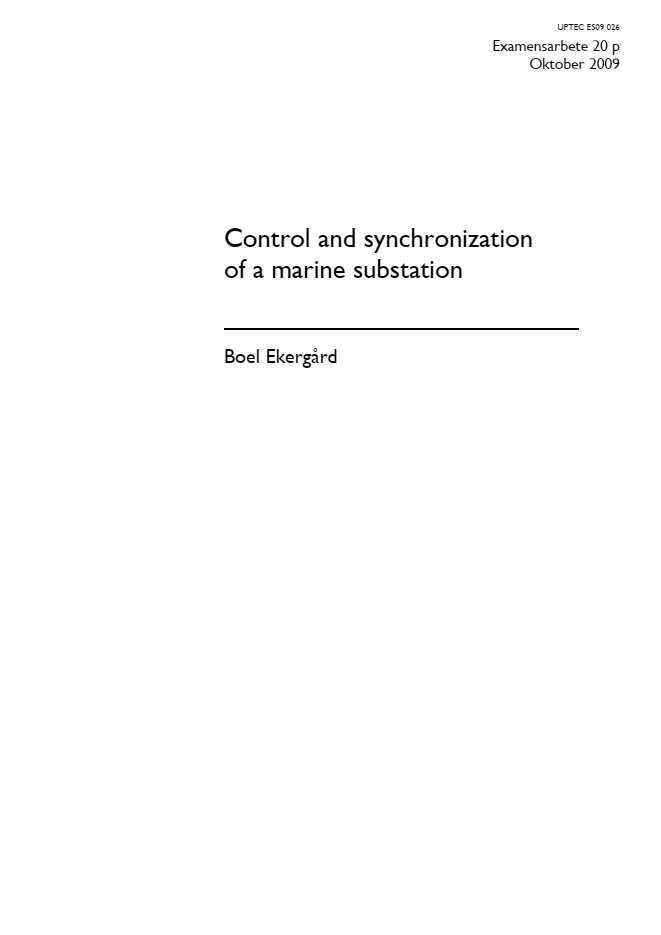Control system for the inverter
The world´s energy system is today addicted to fossil fuels. 70-80% of the total consumed energy comes from oil or coal. The combustion of oil and coal release heat which can be converted to electric or mechanic energy. A side affect of the combustion process is the production of the greenhouse gas carbon dioxide.

The amount of carbon dioxide has due to this energy system increased in the atmosphere. The effects of our Nature due to a higher amount of carbon dioxide in the atmosphere is a question with a lot of different answers.
Strong evidence points an increasing temperature, increasing dusters, higher sea-level, drought and more extreme climate with larger, stronger storms, tornados etc. This climate change will affect millions of people and other living species. This is an important problem of our time and one reason why the need for clean, cheap and renewable energy is increasing.
Another important point is the dwindling of the fossil fuels reserves. This results in increasing prices and lack of energy.
In recent years the research on this potential energy source has increased, and of lot of different wave-energy converters have been developed. A technique developed at Uppsala University is a linear direct driven permanent magnet generator placed on the seabed. The wave’s kinetic energy is absorbed by a point absorbing buoy on the sea surface, directly connected to the generator, see Figure 1.
The movement of the waves moves the buoy and hence the translator, piston, up and down.

The choice to work with a direct driven generator is made to be able to eliminate mechanical part, gearboxes etc, as much as possible. By this choice, the generators have a robust construction and require minimal of maintenance.
The first step in the substation is the rectifier. The rectifier consists of six passive components, diodes, and is not dependent of active control. The rectifier is followed by a large capacitor bank. The varying DC voltage charges the capacitors, and a stable DC voltage output can be reached.
The stabilized DC voltage is converted to AC voltage with the desired frequency by an inverter. The inverter consists of six active electrical components, six IGBTs. These active components are dependent of control. A supplementary task for the control system are to synchronize the inverter with the local grid and follow the grid´s changing frequency.

The last part of the conversion is to transform the voltage to suitable amplitude and by an LCL-filer reduce the amount of harmonics.
In different sea states the generator´s translator is moving up and down at different velocities. To maximize the output power from the generator, the DC level will probably be different for different sea states.
The aim of this thesis is to investigate how a smooth and safe tap change can be achieved and to construct a control system for the inverter. The report starts with a Theory part, where the main components in this work are described.
The format of the control system and three different on load tap change systems are presented.
Commercial methods used to synchronize the inverter with the grid are described with both its pros and cons. The Result-part sums up and presents the different losses in the three different on load tap change systems. Simulation results from the different synchronization methods are available and drivecircuit for the electrical component are presented.
The Discussion-part evaluates the advantages and disadvantages of the different system and methods.
| Title: | Control and synchronization of a marine substation – Master Thesis by Boel Ekergård at UPPSALA UNIVERSITET |
| Format: | |
| Size: | 1.9 MB |
| Pages: | 74 |
| Download: | Right here | Video Courses | Membership | Download Updates |


